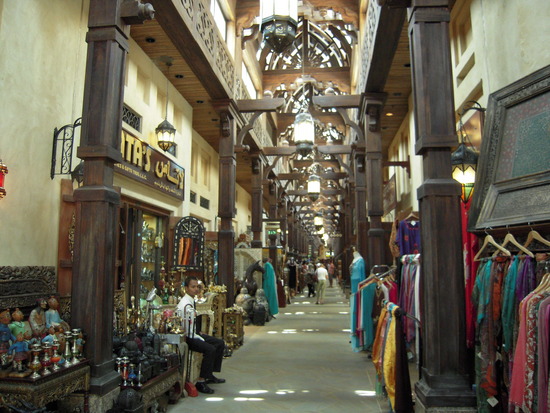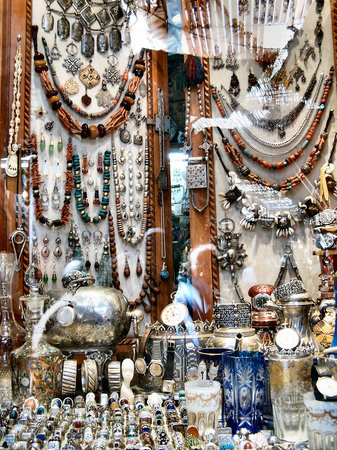arabian souk-arabic souk






Find out what a souk is, and about the wonderful things that happen there, in this account of the author's visit to Morocco.
The Arabic for Morocco is Al Maghrib, or, the furthest west, the place where the sun sets. Seen from the perspective of the Middle East (the heartland of the Arab World), this makes sense. Morocco has a fascinating mix of conservative Islamic traditions and more liberal French ones. Because of its proximity to Europe (Spain is virtually a quick swim or a faster ferry ride away), Morocco enjoys a looseness, a spirit not common in other Arab states.
And then there are the blue—or brown—eyed street urchins who greet you in English, French, Arabic and even a little Japanese. They are everywhere, and if you sometimes tire of their persistence, you'll admire their ingenuity and the quickness of their smiles. Despite reports to the contrary, most don't have nimble fingers, but they do have nimble minds.
Travelers (especially women traveling alone) may be hassled by young men, or shaabab. The hassling is more annoying than dangerous, and the best response is a firm, la shookran. No, thanks! On the other hand, a hired guide can become your shield, warding off the unwanted attention.
My Market Was Never So Exciting
In Morocco, the sky is impossibly blue, set off by towering mountains and vivid yellow lemon trees. But if anything sums up this still mysterious country, it's probably its Souks. The Souks of Morocco! Crowded, overpowering, exciting outdoor market places with names that seem to come from the movies: Marrakech, Fez, Tangier, and my favorite, the Berber mountain market Souk of Chechaouen. Never mind that these Souks (Arabic for "markets") are the forerunners of our modern malls, which are as insipid as these markets are vibrant. There's no comparison.
A Souk is an absolutely crazy series of twisting streets crowded with stalls and linked by corrugated tin roofs, straw or flapping tent tops. Everything imaginable is sold or bought here, from camels and spices to herbs (legal and illegal) and fine wrought gold ornaments. Leather may be the country's prime product and is considered by many to be the finest in the world.
Weavers At Work
Up on the rickety second floor of the outdoor courtyard, weavers are hard at work making the famous Moroccan jalaabas, or loosely woven tunics. These skilled craftsmen also weave dazzlingly colorful magic carpets. The weaving rooms are very small and very cramped with four or more workers crowded together. A few words of shouted greeting soon dissolve the initial suspicion and tension: "Salammu allaykum," we called out. "Wa allaykum wa sallam," came the answer. Peace be upon you, and upon you, peace. That did it. We were gestured into the stall.
The sound of the loom seems ancient, the rhythmic thump, thump, thump stirs some long lost memory from a primitive time and place. A tiny radio perched on a ledge blares forth decidedly non-traditional music. It helps relieve the tedium of the work as the weavers ply a trade handed down through generations. The Berber mountain dwellers in the Riff mountains bring the wool to the weavers. It's not surprising that the jalaabas and rugs are so richly colored since the Berbers wear bright, tall, conical straw hats and multicolored skirts. Their faces and hands are colored with tattoos that sometimes cover the face entirely, but they don't hide the generous smiles, generous in spite of imperfect teeth.
One of the women explains that it takes about two days to make a jalaaba and several weeks or so to make a typical Moroccan carpet. How much does it cost? The art of arriving at a price rivals the skill of the weavers. Let's just say you can pay as high a price as you wish. They won't refuse your offer. But you can pay as little as $16, it seems. Not bad. Then again, the nature of your haggling depends on your relationship to the economies of developing countries.
Stonemasons & Metalsmiths
The thump of the looms blends with the contrapuntal sounds of tap, tap, tap. Out on the street repairmen are tapping individual cobblestones into place. The only concession to labor-saving devices is an ancient wheelbarrow. They work carefully, precisely, replacing rutted and worn cobblestones along twisting alleys. The alleys themselves twist and turn and wind with no logic and less direction. To be lost is to be able to marvel at the doors, so vividly colored blues against a white stucco house. Moroccan doors are famous, and one of them is wide open.
Inside, there's a very different kind of tapping. In this shop young men are creating intricate designs on pure bronze plates, which scatter sunbeams around the dust-filled room. The master of the shop proudly tells us he has designed ornaments for the royal palace, and these are his apprentices. The young men work intensely, barely looking up to notice us. One of them is squeezing lemon juice into the cracks and crevices to clean the plate. My friend asks how you can tell the difference between bronze and brass. We hold our breaths wondering if we asked a stupid question. The master smiles and hits the plate with a wooden mallet. The "gong" vibrates around the small room, bouncing of the walls and my head. With a slight bow, he pronounces the verdict: "100 percent bronze!" I learn that bronze has a deeper, longer-lasting vibration, while brass apparently falls a bit dead to the ear. So, keep that in mind when you shop.
Outside, the cacophony of sound borders on madness. Tinkers yelling, selling their wares. Donkey carts whizzing by loaded with protesting chickens. French and Arabic exhortations to "Come, see. Buy, now, here. The very best, and just for you! Walla (by God), I promise you, never in your life have you seen such a _______ (fill in the blank)."
morocco culture,moroccan food,morocco food,moroccan cuisine,morocco beaches,moroccan meal,beaches in morocco,moroccan culture,hercules cave,hercules cave morocco
 HERITAGE Three names for one city…The origin of the city of Casablanca is very vague, the history of the white city is a reflection of it’s personality; a mysterious place with rich ethnic and cultural mixing and a rapid economic success.
HERITAGE Three names for one city…The origin of the city of Casablanca is very vague, the history of the white city is a reflection of it’s personality; a mysterious place with rich ethnic and cultural mixing and a rapid economic success. The Sultan decided to restore the city to its former glory. He moved there and built a mosque, a hammam, madrasa and other institutions essential to ensure the smooth running of a city. The city was then re-named ‘Dar El Beida’, eager to make a port of international importance, he built a fortified stronghold and walls (the scala). After opening the port to Europe in 1830, trade with Spain became regular. That is how the city got the name “ Casa Blanca”, translation of Dar El Beida.
The Sultan decided to restore the city to its former glory. He moved there and built a mosque, a hammam, madrasa and other institutions essential to ensure the smooth running of a city. The city was then re-named ‘Dar El Beida’, eager to make a port of international importance, he built a fortified stronghold and walls (the scala). After opening the port to Europe in 1830, trade with Spain became regular. That is how the city got the name “ Casa Blanca”, translation of Dar El Beida.











